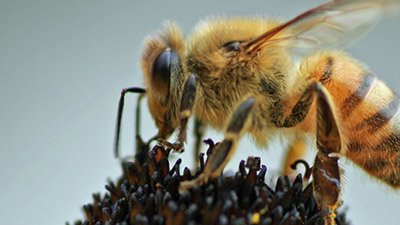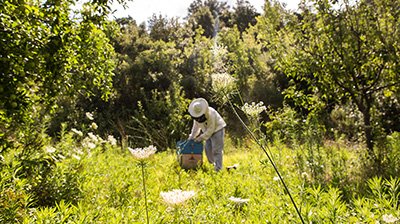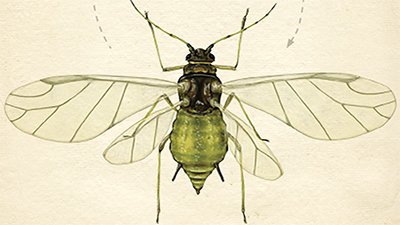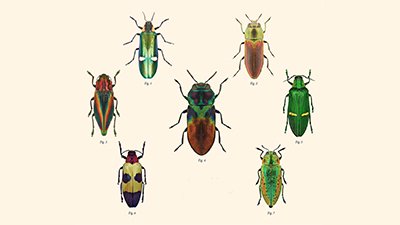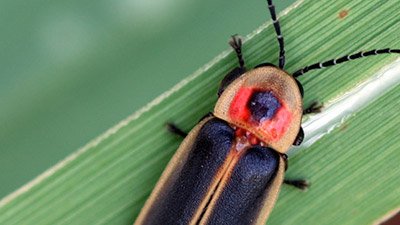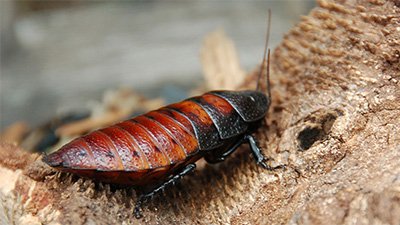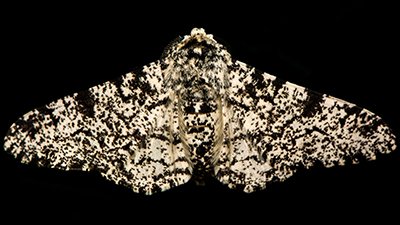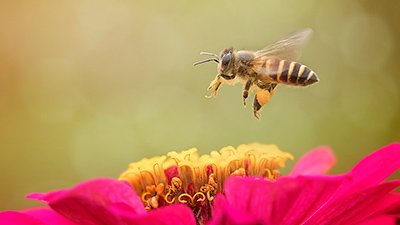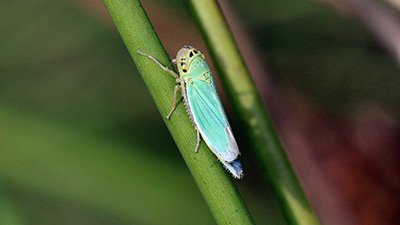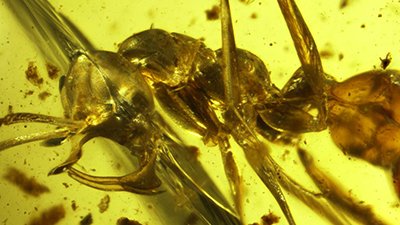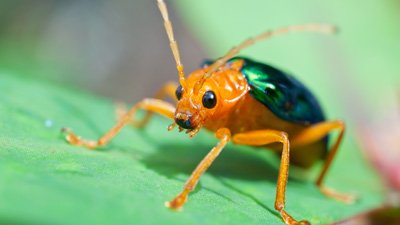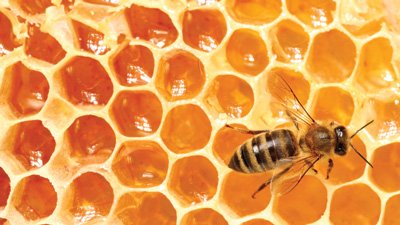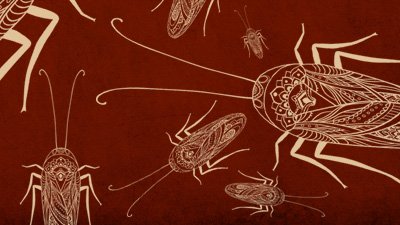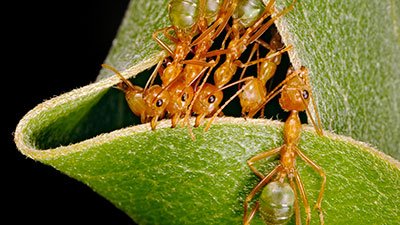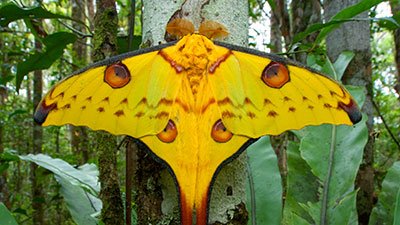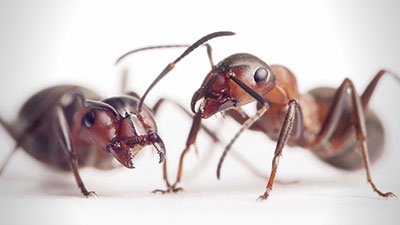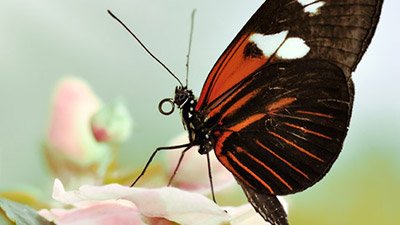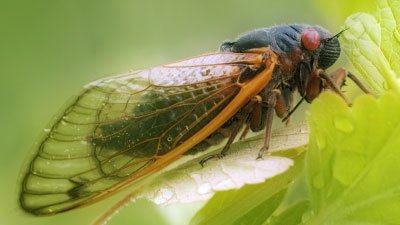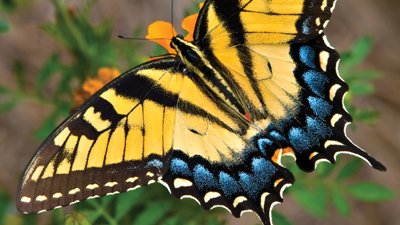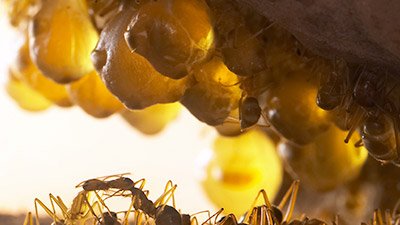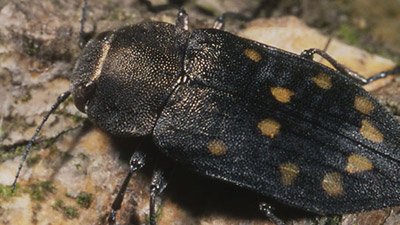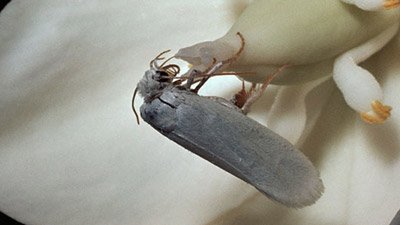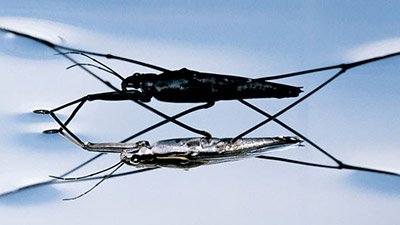Insects
Beautiful Butterflies
Butterflies are found worldwide. They live on every continent, except Antarctica, and in many diverse environments. They come in a variety of shapes and sizes, and their colors span the rainbow. Like flowers in flight, butterflies manifest the artwork of God across the globe.
Fire-loving Beetle
The Melanophila beetle is one of many creatures that actually hunt for fires. Its name means “black-loving” because the beetle likes freshly burned, blackened wood, where the female lays her eggs. Often the charred wood is still hot and smoldering when the beetles arrive.
Amazing Ants
Ants have taken over the world, it seems, but they didn’t do it alone! One reason they’re so successful is their ability to communicate with each other—where to go, what to watch out for, how to help.
Bee Scouts
Bee scouts seek out new flowers and new sources of food. But what motivates a bee scout? What makes her take risks, explore the unfamiliar, unselfishly bring back news of her discoveries and set out again to spend herself for the sake of the hive?
Articles About Insects
-
Jan. 2, 2024 from Answers Magazine
The next time you see a honeybee, take a moment to thank the Creator for his abundant provision through these amazing little creatures.
-
Oct. 20, 2023 from Answers in Depth
Carpenter ant colonies evade zombie apocalypse because only the climbing dead become weapons of mass dispersion.
-
Oct. 15, 2023 from Answers Magazine
If God is good, why are some creatures so bad?
-
June 18, 2023 from Answers Magazine
The author experienced firsthand God’s incredible design for bees—and mankind’s opportunity to steward even the smallest of God’s creatures.
-
Jan. 8, 2023 from Answers Magazine
This agile flyer scoots in and out of tight spots faster than any plane Boeing or Airbus ever dreamed of.
-
Oct. 9, 2022 from Answers Magazine
Animals that can grow wings in a single generation—only an imaginative Creator could think of that!
-
July 1, 2022 from Answers Magazine
A bumblebee may be an unwelcome sound to you. But for a flower, it’s positively electric.
-
Jan. 1, 2022 from Answers Magazine
This beetle’s colors serve as camouflage against the dense backdrop of trees and plants. How is this possible?
-
April 24, 2021 from Answers Magazine
The most diverse order of animals on the planet is by far the beetle order. God shows how He can take one design and create a spectacular array of forms.
-
Sept. 6, 2020 from Answers Magazine
Shy, gentle, and easy to care for — does the hissing cockroach sound like an ideal pet?
-
Feb. 23, 2020 from Answers Magazine
Despite their bad reputation, cockroaches were designed to do good things.
-
Dec. 22, 2019 from Answers Magazine
When Dr. Andy McIntosh investigated the bombardier beetle, he discovered explosive evidence of God’s intricate design.
-
Oct. 19, 2019 from The New Answers Book 4
The story of the peppered moth has been set forth for decades as the prime example of evolution in action. But, are they really evidence of evolution?
-
June 26, 2019 from Answers in Depth
It was recently discovered that double-stranded microRNA (miRNAs) fed to honey bees conferred resistance to certain viral diseases that they were exposed to.
-
March 1, 2019 from Answers Magazine
When they work together, these insignificant insects can accomplish significant things.
-
Aug. 17, 2018 from Answers in Depth
While design may be seen in all living creatures, the early development of the fruit fly shows the making of a “simple” fruit fly exhibits forethought.
-
Jan. 31, 2018 from Answers in Depth
How should young-earth creationists explain the formation of highly specific relationships between plants and insects?
-
Oct. 27, 2017 from Answers in Depth
Detailed images of a newly discovered species of hell ant—extinct ants with scythe-like jaws—in Burmese amber may hold the answer to how they ate.
-
Aug. 15, 2017 from 10 Cursed Creatures with Undeniable Design
The bombardier beetle’s tail end is equipped with twin “spray nozzles” (or gland openings) to shoot its gaseous ammunition.
-
June 20, 2017 from 10 Cursed Creatures with Undeniable Design
A single worker bee may add merely one-twelfth of a teaspoon of prized honey to its colony. Yet the power of the bee is in the cooperation of the colony.
-
Oct. 16, 2016 from Answers Magazine
Gifted ant architects have built thriving cities on every continent—using every imaginable kind of material.
-
Aug. 7, 2016 from Answers Magazine
The family of giant silk moths, or Saturniidae, includes the largest—and arguably most beautiful—moths in the world.
-
Magazine Department ArticleBee BeaconsJan. 1, 2016 from Answers Magazine
Flowers guide bees in ways invisible to human eyes. And the bees have some pretty sophisticated onboard equipment to detect those floral beacons.
-
Nov. 8, 2015 from Answers Magazine
Ant behavior may help us save lives. Creation is overflowing with such practical ideas and possible solutions to our most vexing problems.
-
July 14, 2015 from Answers Magazine
What if badges could change color in an explosion, giving doctors vital information about the severity of the shock?
-
-
Magazine Department ArticleDinosaur MothJuly 1, 2015 from Answers Magazine
Researchers on Australia’s Kangaroo Island have discovered a tiny moth they claim has remained essentially unchanged for 40 million years.
-
May 14, 2015 from Answers in Depth
Fleas are considered a nuisance. How can they be explained as a part of God’s very good creation?
-
March 22, 2015 from Answers Magazine
What’s fascinating about periodical cicadas is their sheer numbers and the mysterious timing of their emergence from hiding.
-
Feb. 13, 2015 from Answers in Depth
Research shows that bedbugs are still bedbugs. They don't demonstrate Darwinian evolution—they vary within their created kind to survive in a sin-cursed world.
-
Feb. 1, 2015 from Answers Magazine
Since the dawn of time, people have marveled at the caterpillar’s visible transformation into a butterfly.
-
Jan. 24, 2015 from Answers in Depth
Is the war on malaria plagued by “rapid evolution of insecticide resistance” in mosquitoes?
-
Jan. 1, 2015 from Answers Magazine
Most people would be happy to live in a world without cockroaches. But even creatures we see as pests show God’s amazing designs.
-
Nov. 9, 2014 from Answers Magazine
Recently the abdomen of a certain hornet was discovered to have intricate structures that look like space-age solar panels.
-
Sept. 2, 2014 from Answers Magazine
One reason ants are so successful is because of their ability to communicate with each other.
-
July 1, 2014 from Answers Magazine
Honeypot ants gorge until they can’t leave the nest.
-
June 7, 2014 from Answers in Depth
Hawaiian cricket “evolution” into stealth mode saves them from extinction.
-
May 26, 2014 from Answers in Depth
Evolution: Not just for survival anymore!
-
In-Depth ArticleMolecular Basis of Aphid-Bacteria Nutritional Symbiosis RevealedMay 22, 2014 from Answers in Depth
Sap-sucking insects get a nutritional leg up from bacterial symbionts.
-
March 2, 2014 from Answers Magazine
The Melanophila beetle is one of many creatures that actually hunt for fires.
-
In-Depth ArticleHoneybees Navigate with a Map of Polarized LightJan. 30, 2014 from Answers in Depth
The uncanny ability of honeybees to remember and communicate the location of sweet nectar has been the subject of ongoing investigations.
-
Fig Wasp Fossil Said to Pre-Date Figs by 65 Million YearsDec. 26, 2013 from News to Know
Fig wasp fossil shows up too “soon” in the fossil record.
-
June 9, 2013 from Answers Magazine
A special moth-flower relationship, discovered in arid regions of North America, has inspired the wonder of biologists worldwide.
-
How Do Leafhopper Legs Survive the Launch?April 6, 2013 from News to Know
Discoveries about Leafhopper locomotion may provide useful lessons in biomechanics and robotics.
-
Feb. 24, 2013 from Answers Magazine
Since creation, water striders have been skipping effortlessly across lakes and ponds. The secret is an ingenious design that only the Great Designer could have invented.

Answers in Genesis is an apologetics ministry, dedicated to helping Christians defend their faith and proclaim the good news of Jesus Christ.
- Customer Service 800.778.3390
- © 2024 Answers in Genesis


